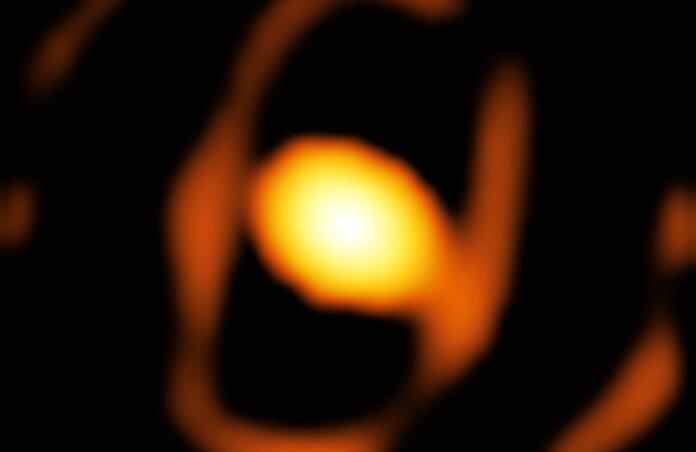Scientists take the first close-up image of a star outside the Milky Way

Astronomers have taken the first close-up picture of a star outside of the milky way. WOH G64, also known as the “behemoth star” has been imaged using the European Southern Observatory’s Very Large Telescope (ESO’s VLT). The star is in the final stages of its life before it becomes a supernova, providing a unique opportunity for astrophysicists to observe this in real time.
"For the first time, we have succeeded in taking a zoomed-in image of a dying star in a galaxy outside our own Milky Way," says Keiichi Ohnaka, an astrophysicist from Universidad Andrés Bello in Chile. There have been around two dozen zoomed in images of stars in our galaxy, which reveal various stellar properties. However, observing stars much further away in other galaxies has proved to be challenging.
WOH G64 is found within the Large Magellanic Cloud, located 160,000 light years away. The LMC is one of the small galaxies orbiting the milky way. The “behemoth star” has been known about for decades, classified as a red supergiant at a colossal size of 2000 times the sun. if it were placed at the centre of the solar system it would span the orbit of Saturn.
The team has had a long interest in the red supergiant, using ESOs VLTI in 2005 and 2007 to study the properties and have continued investigating it since. However, imaging the star has remained difficult. The capture the star, the team had to wait for GRAVITY to be developed, one of the VLTIs second generation instruments.
Comparison of their new results with previous observations found that surprisingly, the star had become dimmer over the course of a decade. In the late stages of a massive stars life, red supergiants will shed their outer layers of dust and gas, a process that can last thousands of years. "This star is one of the most extreme of its kind, and any drastic change may bring it closer to an explosive end," adds co-author Jacco van Loon, Keele Observatory Director at Keele University, UK, who has been observing the star since the 1990s.
Astronomers think that this shedded material is responsible for the dimming and the strange shape of the dust cocoon enveloping the star. The cocoon is egg-shaped, which came as a surprise since a different shape was predicted from previous observations and models. The cocoons shape may also be explained by the influence of an undiscovered companion star.
Further observations of the star are vital in uncovering the stars properties in more detail. There are planned updates for the VLTIs instruments such as GRAVITY+ which may be able to accomplish this.
--
Cover image: ESO/K. Ohnaka et al. 2024
Journal source: K. Ohnaka, K.-H. Hofmann, G. Weigelt, J. Th. van Loon, D. Schertl, S. R. Goldman. Imaging the innermost circumstellar environment of the red supergiant WOH G64 in the Large Magellanic Cloud. Astronomy & Astrophysics, 2024; 691: L15 DOI: 10.1051/0004-6361/202451820
